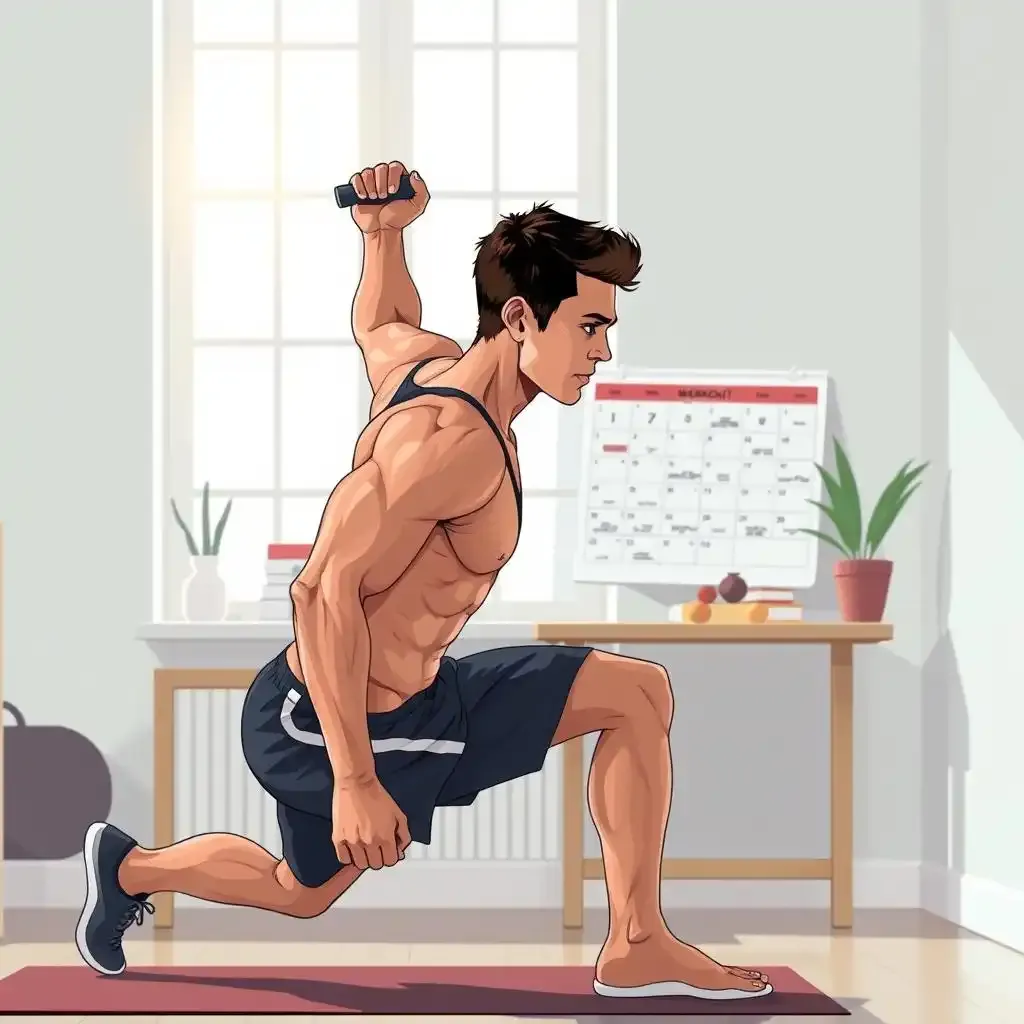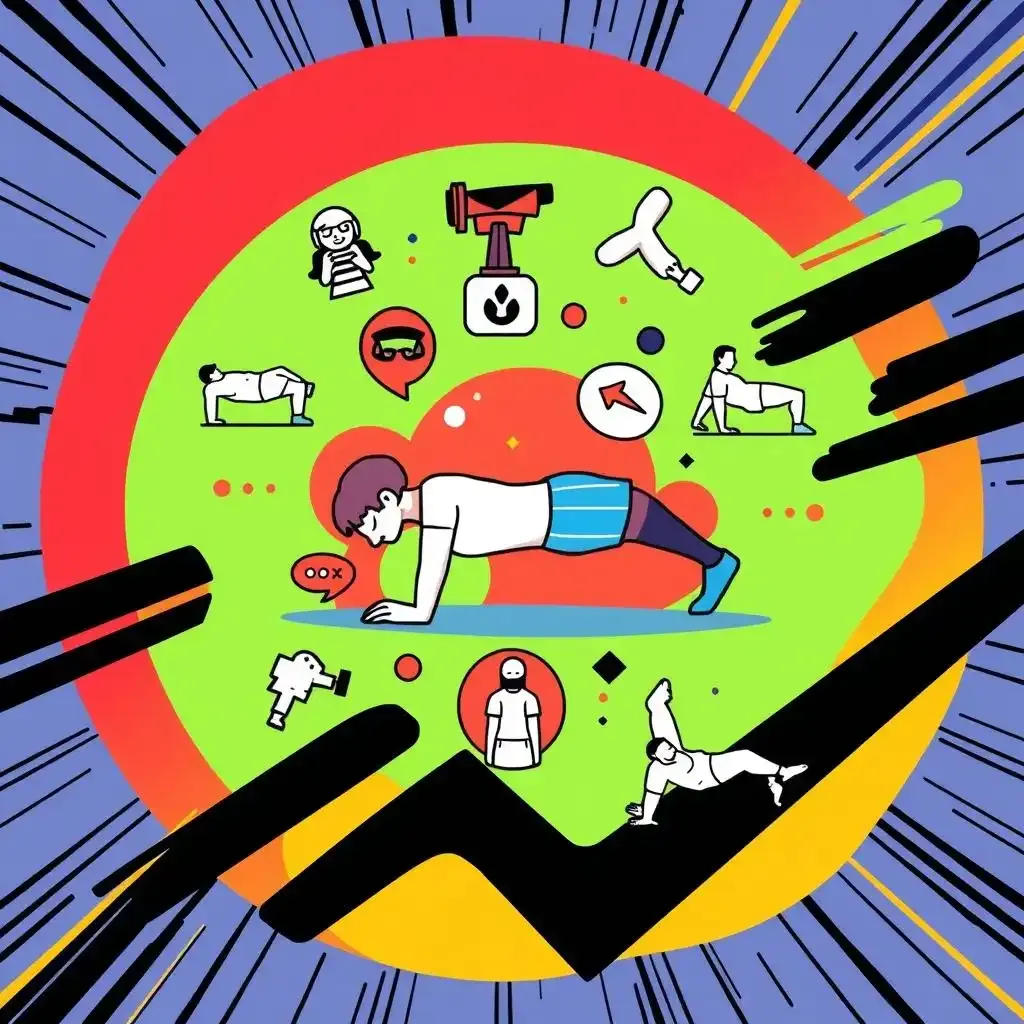Table of Contents
Ready to sculpt your body and boost your fitness without expensive gym memberships or complicated equipment? Then get ready to investigate into the world of calisthenics, a fantastic way to build strength, endurance, and flexibility, all from the comfort of your own home! This comprehensive guide will walk you through creating a personalized calisthenics workout routine at home, perfect for all fitness levels. We'll cover everything from beginner-friendly exercises to advanced progressions, ensuring you have a clear path to achieving your fitness goals. Remember, consistency is key! With a dedicated approach and the right plan, you'll be amazed at what you can achieve with a calisthenics workout routine at home. So, let's get started on your process to a stronger, healthier you, right here on kizworld!
Crafting Your Perfect Calisthenics Workout Routine at Home
Crafting Your Perfect Calisthenics Workout Routine At Home
Hey there, fellow fitness enthusiast! Let's talk about building YOUR perfect at-home calisthenics routine. Think of it like building a LEGO castle – you start with the basics, then add more and more awesome pieces until you've got something truly magnificent! We're not talking about some generic, boring routine; we're talking about a personalized plan that fits your life and your goals. First, we need to assess your current fitness level. Are you a total newbie, or do you already have some experience? Don't worry if you're starting from scratch; check out our starter workout guide for some great exercises. We'll build up gradually, focusing on proper form over speed. Remember, quality over quantity is key!
Day | Workout Focus | Example Exercises |
|---|---|---|
Monday | Upper Body | Push-ups, Incline Push-ups, Dips |
Tuesday | Lower Body | Squats, Lunges, Calf Raises |
Wednesday | Rest or Active Recovery | Light cardio, stretching |
Thursday | Upper Body | Pull-ups (assisted if needed), Rows |
Friday | Lower Body | Jump Squats, Glute Bridges |
Saturday | Core & Flexibility | Plank, Side Plank, Stretching |
Sunday | Rest | Relax and recharge! |
Next, let's choose your exercises. Start with the fundamentals – push-ups, squats, planks. These are your building blocks. Master those, and then we can move on to more challenging variations. For example, instead of regular push-ups, try incline push-ups (easier) or decline push-ups (harder). Want to build serious upper body strength? Check out our guide on bar calisthenics for some advanced moves. Remember, consistency is key! Aim for 3-4 workouts a week, each lasting 30-40 minutes. It's better to do a shorter, effective workout than a long, sloppy one. And always listen to your body; rest when you need to.
- Warm-up before each workout.
- Focus on proper form.
- Gradually increase intensity.
- Listen to your body!
- Have fun!
Now, let's talk about progressive overload. It's the secret weapon for building muscle. It simply means making your workouts gradually harder over time. You can do this by increasing reps, sets, or the difficulty of the exercises. For example, if you can do 10 push-ups easily, aim for 12 next time. Or, try a harder variation like diamond push-ups. Don't forget to check out our beginner calisthenics training for some helpful tips. It’s all about steady progress, not sudden leaps. Remember that slow and steady wins the race, and you'll see amazing results in time.
"The body achieves what the mind believes." - Napoleon Hill. This quote perfectly captures the importance of mindset in achieving your fitness goals. Believe in yourself, and you’ll be amazed by what you can accomplish. You’ve got this!
Finally, remember that rest and recovery are just as important as the workouts themselves. Your muscles need time to repair and rebuild. Aim for at least one rest day per week. Also, don't forget to stretch regularly to improve flexibility and prevent injuries. And remember, a balanced diet is vital to support your training. If you're struggling to find a routine that works for you, check out our detailed guides on great calisthenics workout routines.
Think of your body as a garden. You wouldn't expect a beautiful garden to bloom overnight; it takes time, care, and the right approach. Similarly, building strength and fitness takes consistent effort. Don't get discouraged if you don't see results immediately. Keep at it, and you'll eventually reach your goals! For more beginner-friendly exercises, check out our beginner calisthenics workout guide.
Essential Calisthenics Exercises for a Home Workout Routine
Essential Calisthenics Exercises For A Home Workout Routine
Push-Ups: The Foundation of Upper Body Strength
Okay, let's start with the king of bodyweight exercises: the push-up! It's so simple, yet so effective. Think of it like this: you're building a tower of strength, brick by brick. Push-ups are your foundation bricks. Start with as many as you can do with good form – don't cheat! If you can only manage a few on your knees, that's perfectly fine. The important thing is to build that strength gradually. As you get stronger, you can try different variations: incline push-ups (easier, using a wall or bench), standard push-ups, and decline push-ups (harder, feet elevated). It's all about progressive overload, making your workout gradually harder! Want more push-up variations? Check out our guide on for some extra ideas.
- Start with as many reps as you can with good form.
- Gradually increase reps or try harder variations.
- Listen to your body and rest when needed.
Squats: Building Lower Body Ability
Next up, we've got squats! These are your leg day superstars. Think of them as the engine of your lower body, providing capability and stability. Just like push-ups, start with what you can manage. If you're new to this, focus on proper form. Imagine you're sitting down in an invisible chair – that's the kind of motion you want. As you improve, you can add variations like jump squats (for extra cardio) or pistol squats (seriously challenging!). Remember, consistency is key. Aim for 3 sets of 10-15 reps. Need some extra motivation? Check out our plan for a full-body routine.
Exercise | Sets | Reps |
|---|---|---|
Squats | 3 | 10-15 |
Lunges | 3 | 10-15 per leg |
Calf Raises | 3 | 15-20 |
Plank: Core Strength for Everything
Finally, let's talk about the plank. This isn't just about having a rock-solid core; it's about stability and balance for *everything* you do. It's like the glue that holds your whole body together. Start by holding a plank for as long as you can with good form. Focus on keeping your body straight, like a perfectly taut plank of wood (hence the name!). As you improve, try variations like side planks or forearm planks to challenge yourself even more. Even a few seconds of plank can make a huge difference. Remember, small steps lead to big results! If you're looking for a more comprehensive routine, check out our plans. It's filled with amazing exercises to help you reach your fitness goals.
"The difference between ordinary and extraordinary is that little extra." – Jimmy Johnson. This applies perfectly to calisthenics. That little extra effort, that extra repetition, that little extra push—that's what makes all the difference.
Progressing Your At-Home Calisthenics Workout Routine
Level Up Your Calisthenics Game
So, you've mastered the basics – awesome! Now it's time to make things interesting. Think of your initial calisthenics routine as a simple bike; now we're adding gears! Progressive overload is your secret weapon here. It's all about gradually increasing the difficulty of your workouts. This could mean more reps (repetitions), more sets (groups of reps), or harder variations of the exercises. For instance, if you're easily knocking out 10 push-ups, try aiming for 12 next time. Or, switch to decline push-ups – those are way tougher! Remember, consistency is key, but don't forget to listen to your body. Rest days are important. Your muscles need time to recover and rebuild; otherwise, you risk injury. If you're feeling lost, check out our guide for extra support. It's got some awesome tips to help you avoid common mistakes.
- Increase reps (repetitions)
- Increase sets (groups of reps)
- Try harder exercise variations
- Listen to your body and rest when needed
Adding Complexity and Variety
Once you're comfortable with the basic exercises, it's time to spice things up! Think of it like upgrading your video game character – you're adding new skills and abilities. You can introduce more challenging variations of push-ups, squats, and planks. For example, try plyometric push-ups (those explosive ones where you jump!), jump squats (a great cardio boost!), or side planks (a killer core workout!). You can also start incorporating new exercises altogether, like dips (using chairs or a sturdy bench), lunges (fantastic for leg strength and balance), and pull-ups (if you have a pull-up bar, that is!). Remember to maintain good form, even as you progress to more difficult movements. Check out our plan for even more inspiration. It's packed with awesome exercises to take your fitness to the next level!
Exercise | Beginner | Intermediate | Advanced |
|---|---|---|---|
Push-ups | Standard | Incline/Decline | Plyometric |
Squats | Bodyweight | Jump Squats | Pistol Squats |
Plank | Standard | Side Plank | Plank variations |
Final Thought
Building a successful calisthenics workout routine at home takes dedication and smart planning. Remember to start slow, listen to your body, and gradually increase the intensity and complexity of your exercises. With consistent effort and the right approach, you can transform your fitness level and achieve incredible results. So, grab your workout gear, find your space, and begin your transformative trip today! Keep exploring more fitness tips and routines at kizworld.